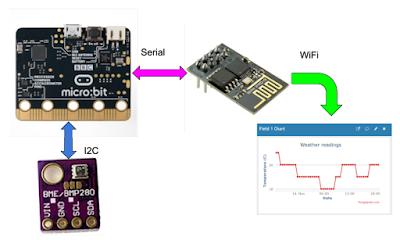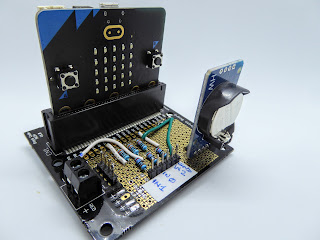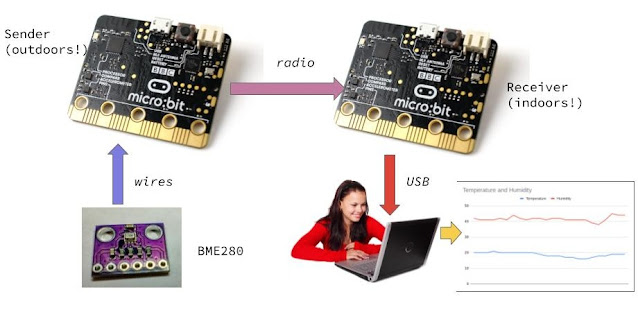Low-cost solar power source for microbits

Solar panel, microbit, battery and regulator Update I have made a few improvements since this post was published in September 2022: The key change is to use a separate low-dropout regulator (LDO) to provide the 3.3V supply to the microbit and other components. I had previously used the microbit's internal regulator. I found subsequently that it has a curious high-current region as the battery voltage drops, which leads to a period of rapid battery discharge. AA rechargeable cells, with 1200 mAh capacity, replace the previous AAA 850 mAh cells I use a 2W solar panel and a smaller current limit resistor, so that I can get a higher charging current I added a PNP transistor to the output of the TL431 shunt, so that it can handle more than 100 mA These changes do add a little to the overall cost, but they do give more reliable operation under a wide range of solar input. Introduction This article describes a low-cost DIY solar power source which is aimed at school...



